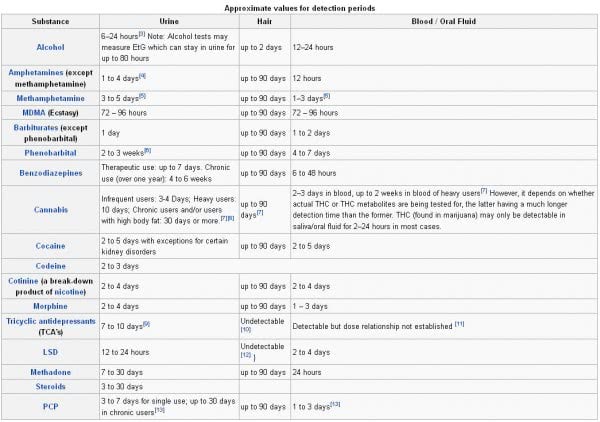An effective drug test measures the concentration of an illegal substance within the tested specimen. The concentration levels of different samples depend on the loss of the testing medium due to natural processes. What this means is that finding the presence of abused substances depends on how you test it. The most common methods of drug testing are urine, hair, and blood specimens. Substances can be detected far longer using the hair follicle test, while urine or blood has virtually the same detection time frame. Urine specimens are often susceptible to adulterants and contaminants, which may alter the accuracy of the specimen tested. Using tests that require blood samples are more reliable, yet they require properly trained medical professionals to handle them. We have included a table of detection periods for the most popular testing methods. This is important information for those who are committed to maintaining a safe, drug-free environment, by maintaining a drug and alcohol testing policy.



